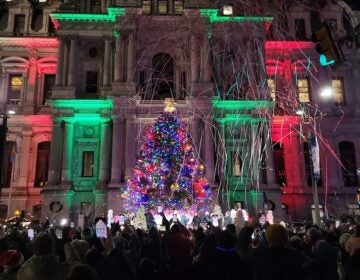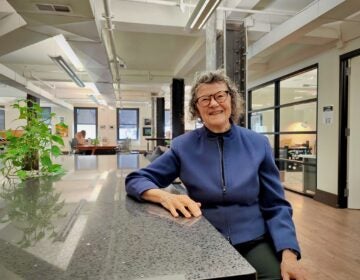Exhibit explores how ‘art in the garden’ helped social change blossom [photos]
Could a spade and garden trowel be tools of revolution?
“Gardening is a surprisingly political act,” observes Anna Marley, curator of “The Artist’s Garden: American Impressionism and the Garden Movement” now on view at the Pennsylvania Academy of the Fine Arts.
Her show of 91 objects – mostly of them paintings with a smattering of first-editions books pertaining to late-Victorian gardening – is quite pretty on the surface, but with an undercurrent of social activism.
The time period of the show, 1887 – 1920, marks the Progressive era, a time of tumultuous artistic and social change in America. It also neatly ramps up to the passing of the 19th Amendment, which gave American women the right to vote.
Gardening, Marley says, was instrumental in womn’s quest for the franchise.
The first American exhibition of French Impressionism was staged at the Durand-Ruel gallery in New York City in 1886 (itself the subject of an upcoming exhibition at the Philadelphia Museum of Art this summer).
That show prompted many American artists to make pilgrimages to Monet’s garden in Giverny, some of whom he graciously took under wing.
When they came back to the States, their heads and brushes laden with en plein air technique, they bent it toward more American ideologies. Many found the quick Impressionistic brushwork suitable for the wilder gardens of the American suburbs.
“They are part of a broader middle class movement of suburban gardeners to create the garden ‘not tended by hired hands,'” said Marley, citing a phrase that appeared in the new garden magazines published out of Philadelphia during this period. “They do not want the formal Italianate garden.”
The “Commuter’s Garden,” so-called for the new American professional who took the train into the city, featured hearty, native plants, six of which are outlined in the exhibition. They include the peony (“extremely long-lived and nearly impossible to kill”), the phlox (“there is no such word as fail in its lexicon”), and goldenrod, a flowering weed unique to North America.
Women of this late-Victorian and early-modern era were beginning to work professionally, building political power. Gardening clubs sprouted in suburbs, particularly Cornish, N.H., represented strongly in the exhibition. Through this gardening movement, women could become influential writers, editors of magazines, landscape architects, and illustrators.
The Pennsylvania School of Horticulture for Women (now Temple University’s Ambler Arboretum) became one of the first training grounds for women aspiring to be landscape architects. It opened in 1910.
Philadelphia’s first professional women’s art collective, known as the Red Rose Girls, had a studio on Chestnut Street in Center City. Its members – Violet Oakley, Elizabeth Shippen Green, and Jessie Wilcox Smith – created some of the most memorable images of the era (think: Mother Goose, Harper’s Magazine, the murals at the Pennsylvania state capitol building).
“In the four decades leading to 1920, there is a lot of activism of women trying to obtain the vote, but it was not the only thing they are active about,” said Marley. “The Progressive era is time of amazing change.”
The vision of the American garden absorbed the nativist politics of the time. A Colonial revival fed native ideologies that ranged from plants – the artist Hugh Henry Breckenridge named his Fort Washington, Pa., estate Phloxdale after the native flower – to people.
That “commuter garden” in the suburbs was tainted for some with classism and racism, as it was intentionally removed from what many saw were urban problems of the poor immigrants crowding cities.
“The Artist’s Garden,” on view until May 24 when it begins a four-city tour, has a sister show at the Michener Museum in Doylestown, Bucks County. The Michener’s “The Artist in the Garden” exhibition picks up where PAFA left off, showing the work of Bucks County Impressionists and their gardens since 1920.
WHYY is your source for fact-based, in-depth journalism and information. As a nonprofit organization, we rely on financial support from readers like you. Please give today.














